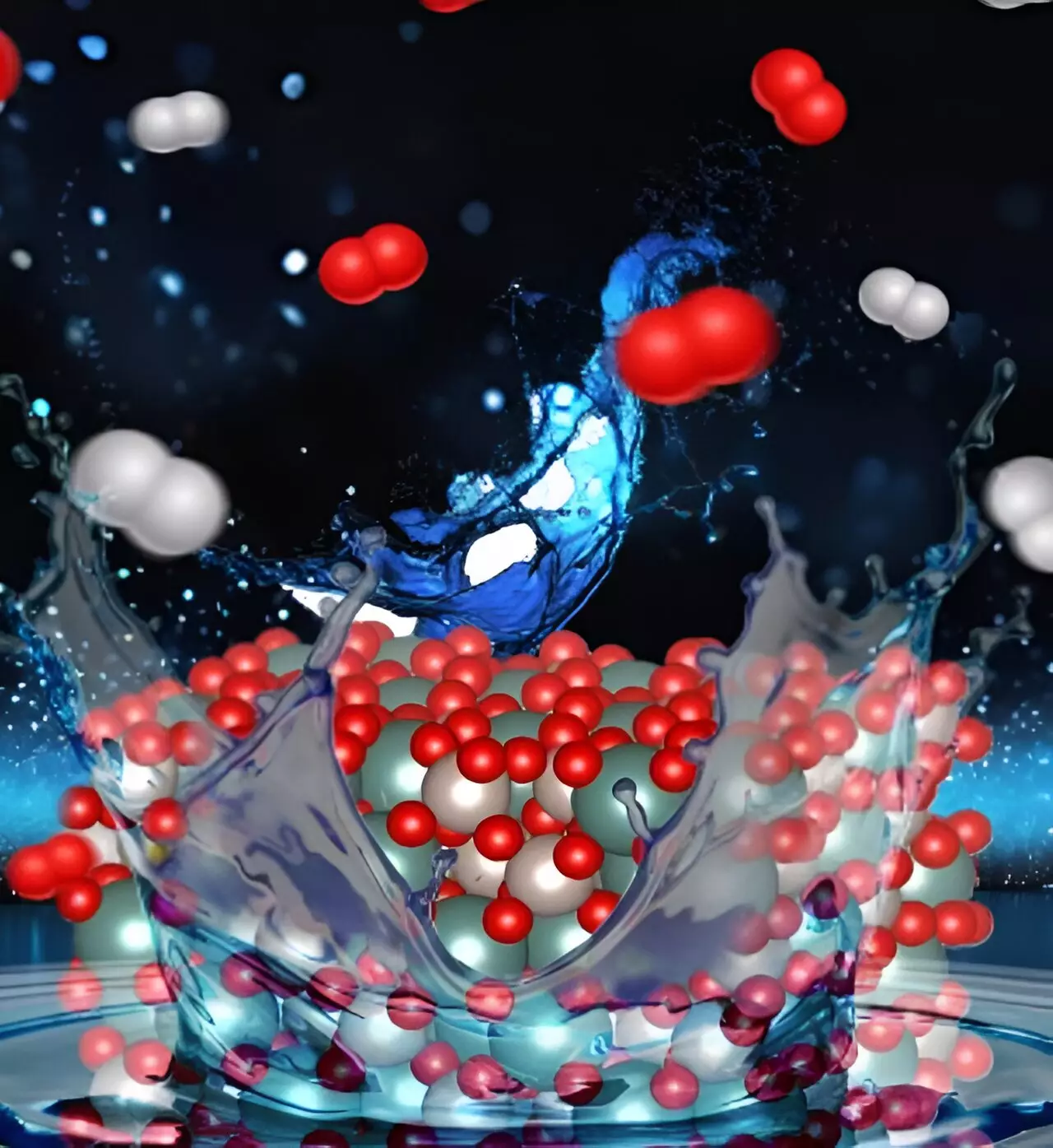As the globe grapples with the pressing issue of climate change, the pursuit of clean and sustainable energy is more urgent than ever. At the forefront of this transition is green hydrogen, a potent energy carrier that holds the potential to significantly reduce greenhouse gas emissions. Green hydrogen is produced through water electrolysis powered by renewable energy sources such as solar and wind. The U.S. Department of Energy envisions a future where green hydrogen plays a crucial role in achieving net-zero carbon dioxide emissions, but to get there, several technological barriers must be addressed. Recent advancements in catalytic processes highlight the promise of defect engineering as a transformative tool for enhancing hydrogen production efficiency.
The Intricacies of Electrolysis and Current Challenges
Water splitting through electrolysis involves the separation of water (H₂O) into its elemental constituents, hydrogen (H₂) and oxygen (O₂). In a proton exchange membrane electrolyzer, an electric current triggers this reaction, with hydrogen collected at the cathode and oxygen expelled at the anode. While the generation of hydrogen gas is quite rapid, the production of oxygen remains sluggish, which restricts the overall efficiency of the process. The slow rate of oxygen evolution does not keep pace with hydrogen production, limiting the current flow and effectively capping the output. This inefficiency poses a significant challenge to scaling up green hydrogen production to an industrial level, creating a clear demand for innovative solutions.
Defect Engineering: A Paradigm Shift in Catalyst Design
A recent study published in the Journal of the American Chemical Society has unveiled a groundbreaking strategy known as defect engineering, which could catalyze this transformation. Led by Professor Hong Yang, this interdisciplinary team of researchers has engineered a complex oxide catalyst that dramatically improves the rate at which oxygen is produced during electrolysis. By intentionally introducing defects into the electronic structure of ruthenium, they have optimized its catalytic properties, steering science closer to scalable green hydrogen production.
The crux of their approach lies in the careful manipulation of the catalyst’s atomic structure. By partially substituting ruthenium atoms with yttrium, they created a synergy that fine-tunes the electronic interactions critical for speeding up oxygen generation. This is akin to techniques used in semiconductor manufacturing, where the introduction of impurities enhances electronic performance. The success of this defect engineering method underscores the potential for reimagining catalyst design, suggesting that imperfections, when controlled and thoughtfully integrated, can yield remarkable benefits in chemical reactions.
Experimental Insights and Unexpected Findings
The research team delved deep into the relationship between catalyst composition and performance. Utilizing thermogravimetric analysis, they quantified the oxygen vacancies created in their newly designed electrocatalysts and correlated these changes to enhanced reactivity. One of the most surprising findings was that the quantity of oxygen remained consistent, while the oxidation state of ruthenium underwent crucial adjustments. This nuanced understanding forces a reevaluation of traditional assumptions surrounding catalyst behavior in electrochemical reactions.
Bidipta Ghosh, a key contributor to the study, noted the revelation that expectations surrounding the oxygen concentration could lead researchers astray. Instead of assuming that higher oxygen concentrations would correlate with better performance, the study reveals that the key lies in the strategic manipulation of electronic structures.
The Collaborative Spirit of Interdisciplinary Research
A fundamental aspect of this research success is the synergy fostered among experts from various fields. The collaboration not only culminated in the identification of innovative catalysts but also provided the technical know-how to navigate the complexities inherent in catalyst characterization. Yang emphasized that the careful balance of defect levels and types is paramount: “We’re not just throwing imperfections into the mix but are fine-tuning them to achieve optimal performance,” he stated, highlighting the disciplined precision required in this kind of experimental work.
This collaborative approach speaks volumes about the future of scientific research and technology development. It embodies a shift towards collective expertise, merging knowledge from differing domains to confront complex challenges. As the energy landscape shifts towards sustainability, fostering such collaborations will be crucial in driving forward-thinking solutions.
Looking Ahead: The Future of Green Hydrogen
As researchers experiment with new methodologies like defect engineering, the dream of producing low-cost, green hydrogen on a large scale becomes increasingly tangible. The implications of these findings extend far beyond the confines of the laboratory. By enhancing the efficiency of hydrogen production, society stands to benefit from cleaner energy options that can power industries, fuel transportation, and meet the growing demands for sustainable energy solutions.
In a world striving for carbon neutrality, advances in catalytic technology represent not just a scientific achievement but a societal imperative. As efforts intensify to tap into the potential of green hydrogen, we must continue to explore innovative strategies that will usher in a new era of energy sustainability. The interplay between creativity, scientific rigor, and collaboration will ultimately determine our success in moving toward a greener future.

